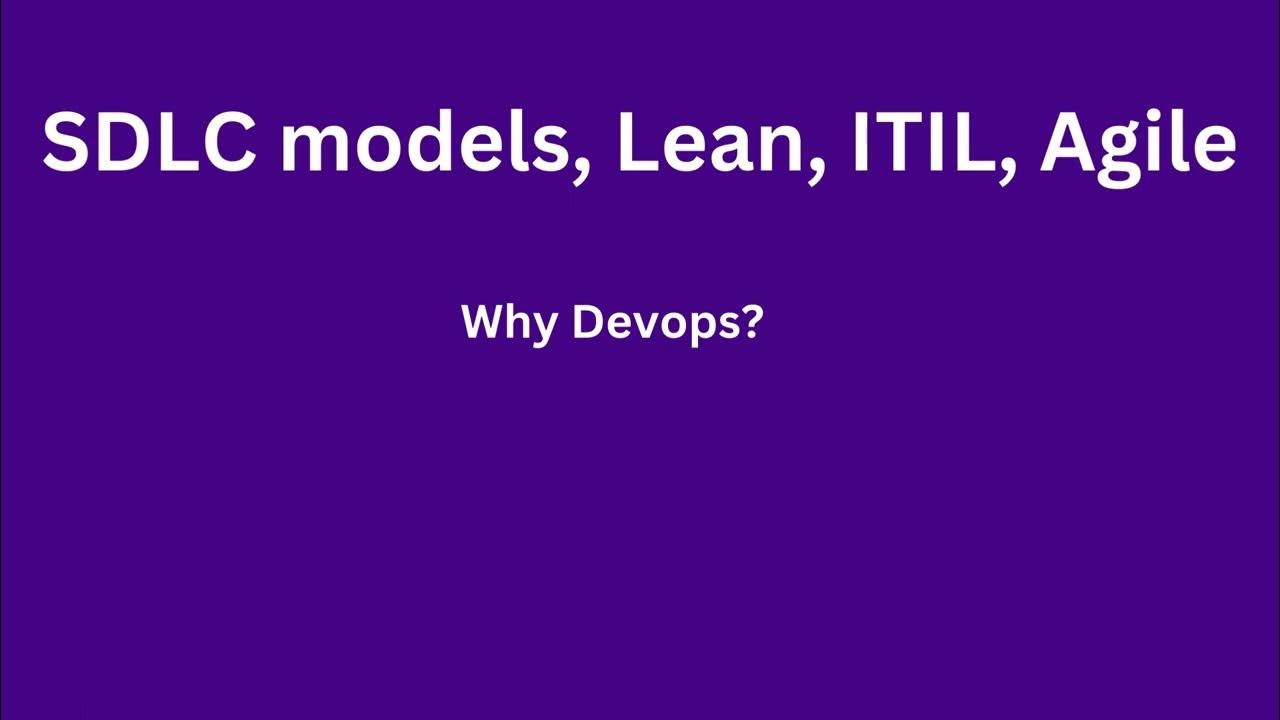Como lidar com riscos na Gestão Ágil
Summary
TLDRIn this live session, the speaker discusses the management of risks in agile methodologies. Drawing from a background in traditional project management, the speaker addresses the common question of how risk management processes compare between agile and traditional frameworks. Key principles like transparency, collaborative planning, and client involvement are explored as ways to manage risks in agile projects. The speaker explains how these principles can be applied in agile events, such as sprint planning and daily stand-ups, to identify and mitigate risks, even without explicit risk management processes. The session also touches on using agile tools and metrics to indirectly manage risks effectively.
Takeaways
- 😀 Agile management does not have explicit risk management processes like traditional project management, but risks are mitigated continuously throughout the project.
- 😀 Transparency is a key principle in agile, helping to avoid hidden risks by ensuring that all team members and stakeholders are aware of potential issues.
- 😀 Collaborative planning is essential in agile, where team members work together to identify and address risks associated with tasks during Sprint planning.
- 😀 Daily stand-ups are a tool for continuously assessing risks, ensuring that teams regularly evaluate progress towards goals and adjust strategies as needed.
- 😀 In agile, client involvement is prioritized throughout the process, reducing the risk of building a product that does not meet the client's needs or expectations.
- 😀 Even though there are no explicit risk management ceremonies in agile, risks are often identified and managed through the regular use of agile artifacts and events.
- 😀 Agile projects emphasize iterative progress and frequent feedback, ensuring that risks related to product delivery and alignment with client expectations are minimized.
- 😀 Risk is considered in prioritizing the product backlog, where items with higher technical uncertainty or risk are given higher priority to mitigate issues early.
- 😀 During Sprint planning, teams have the autonomy to reject tasks they deem unachievable, thus preventing risks related to overburdening the team or setting unrealistic expectations.
- 😀 Regular product demonstrations in agile allow clients to continuously validate the work done, reducing the risk of delivering a product that does not align with business needs.
- 😀 Agile methods may not have formalized risk registers, but consistent use of data, such as cycle time metrics, can help teams identify and manage risks quantitatively.
Q & A
What is the main topic discussed in this live session?
-The main topic of the live session is 'Risk Management in Agile Project Management'. The speaker addresses questions about how risks are managed in agile frameworks compared to traditional project management approaches.
How is risk management handled in traditional project management according to the speaker?
-In traditional project management, risk management involves several defined processes: planning, identifying, analyzing (qualitative and quantitative), and responding to risks. The goal is to monitor and control risks throughout the project.
Does Agile project management have a formal risk management process like traditional methods?
-No, Agile does not have a formal and explicit risk management process. However, risks are still managed and mitigated continuously through Agile principles and events.
What are the core principles of Agile that help in risk management?
-Three key Agile principles that help manage risks include transparency (open communication and visibility), collaborative planning (team involvement to identify and mitigate risks), and customer involvement (regular feedback to ensure the product meets business needs).
How does transparency in Agile help mitigate risks?
-Transparency in Agile helps by ensuring no hidden risks. With clear communication and visibility into the project's progress, any potential issues can be identified and addressed early, reducing the risk of surprises or conflicts.
What role does collaborative planning play in mitigating risks in Agile?
-Collaborative planning in Agile involves the whole team working together to identify and prioritize tasks, which allows risks related to specific tasks (such as technological challenges) to be identified early and managed proactively.
Why is customer involvement considered an important aspect of Agile risk management?
-Customer involvement is essential because it ensures the product is aligned with customer needs. Regular feedback helps avoid the risk of building a product that does not meet business objectives or user expectations.
How does Agile mitigate the risk of building the wrong product?
-Agile mitigates this risk by involving the customer throughout the development process. Regular product demonstrations ensure that the team is building the right product by receiving continuous feedback from the client.
Can Agile practices be used in non-software-related projects, and how does it address risks in such cases?
-Yes, Agile practices can be used in various types of projects, not just software development. In non-software projects, the same principles of transparency, collaborative planning, and customer involvement can help manage risks, although some projects may require more explicit risk management processes.
What is the role of the Sprint in Agile risk management?
-The Sprint in Agile plays a crucial role in reducing risks by ensuring the team has autonomy to accept or reject tasks based on their ability to complete them. This prevents the team from taking on tasks that they know are unfeasible, thus avoiding risks related to underperformance.
Outlines

This section is available to paid users only. Please upgrade to access this part.
Upgrade NowMindmap

This section is available to paid users only. Please upgrade to access this part.
Upgrade NowKeywords

This section is available to paid users only. Please upgrade to access this part.
Upgrade NowHighlights

This section is available to paid users only. Please upgrade to access this part.
Upgrade NowTranscripts

This section is available to paid users only. Please upgrade to access this part.
Upgrade NowBrowse More Related Video
5.0 / 5 (0 votes)





